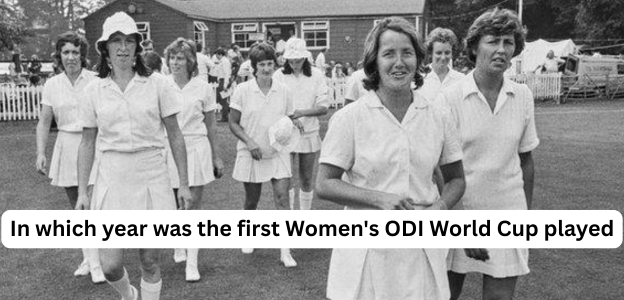The history of women’s cricket is filled with milestones that shaped the game we know today. One of the most defining moments was the first Women’s ODI World Cup, which took place in 1973, two years before the men’s World Cup. This new tournament not only highlighted the skill and passion of female cricketers but also laid the foundation for the global growth of women’s cricket.
In this blog, we’ll explore:
- When and where the first Women’s Cricket World Cup was held
- The teams that participated
- How the tournament was organized
- Who won the 1973 Women’s ODI World Cup
- The legacy it left for women’s cricket
When and Where Was the First Women’s ODI World Cup Played?
The first Women’s One Day International (ODI) World Cup was held in England from June 20 to July 28, 1973. This made it the first-ever global limited-overs cricket tournament, even preceding the men’s World Cup in 1975.
How Did the Women’s World Cup Begin?
The vision for a women’s cricket world cup was brought to life by Rachael Heyhoe Flint, the legendary England captain, and Sir Jack Hayward, a philanthropist who contributed £40,000 to fund the event. Their combined efforts ensured that women’s cricket gained international recognition at a time when opportunities for female athletes were extremely limited.
Format of the 1973 Women’s Cricket World Cup
- Overs per match: 60 (instead of today’s 50 overs)
- Format: Round-robin (each team played all others once)
- No official final: The team with the most points at the end was crowned champion
This meant that every match was important, and the last league match between England and Australia effectively became the deciding clash.
Teams in the First Women’s ODI World Cup (1973)
A total of seven teams took part in the tournament:
- England (host nation)
- Australia
- New Zealand
- Jamaica
- Trinidad & Tobago
- International XI (a team of players from different nations)
- Young England (a development team for younger English players)
👉 Notably, India did not participate in 1973. The Indian women’s cricket team made its World Cup debut later in 1978, when India hosted the tournament.
England’s Triumph in the 1973 Women’s World Cup
The important match of the tournament was played at Edgbaston, Birmingham between England and Australia.
- England’s innings: 279/3 in 60 overs
- Enid Bakewell scored a brilliant 118 runs
- Captain Rachael Heyhoe Flint contributed 64 runs
- Australia’s response: 187/9 in 60 overs
- England won by 92 runs
As a result, England were crowned the first-ever Women’s World Cup champions. The trophy was presented by Princess Anne, and the team was later honored at 10 Downing Street by then-Prime Minister Edward Heath.
Star Performers of the 1973 Women’s Cricket World Cup
- Enid Bakewell (England): Tournament’s top run-scorer with 264 runs
- Rosalind Heggs (Young England): Leading wicket-taker with 12 wickets
Their performances set the benchmark for women’s cricket in the years to follow.
Legacy of the 1973 Women’s ODI World Cup
The first Women’s Cricket World Cup was more than just a tournament—it was a movement. It proved that women’s cricket could attract global attention and inspired future generations of female cricketers.
Key impacts of the 1973 World Cup:
- It inspired the formation of a unified West Indies women’s team, replacing separate teams from Jamaica and Trinidad & Tobago.
- It prepared the way for regular women’s World Cups, with the 2025 edition set to be hosted by India.
- It highlighted pioneers like Rachael Heyhoe Flint, who fought for recognition and opportunity for women in cricket.
Conclusion
The first Women’s ODI World Cup in 1973 was a landmark event that not only crowned England as champions but also gave women’s cricket a global stage for the first time. By happening two years before the men’s World Cup, it sent a strong message: women’s cricket is here to stay.
As we look forward to the 2025 Women’s Cricket World Cup in India, it’s important to remember the legacy of 1973—a tournament that changed the history of cricket forever.





